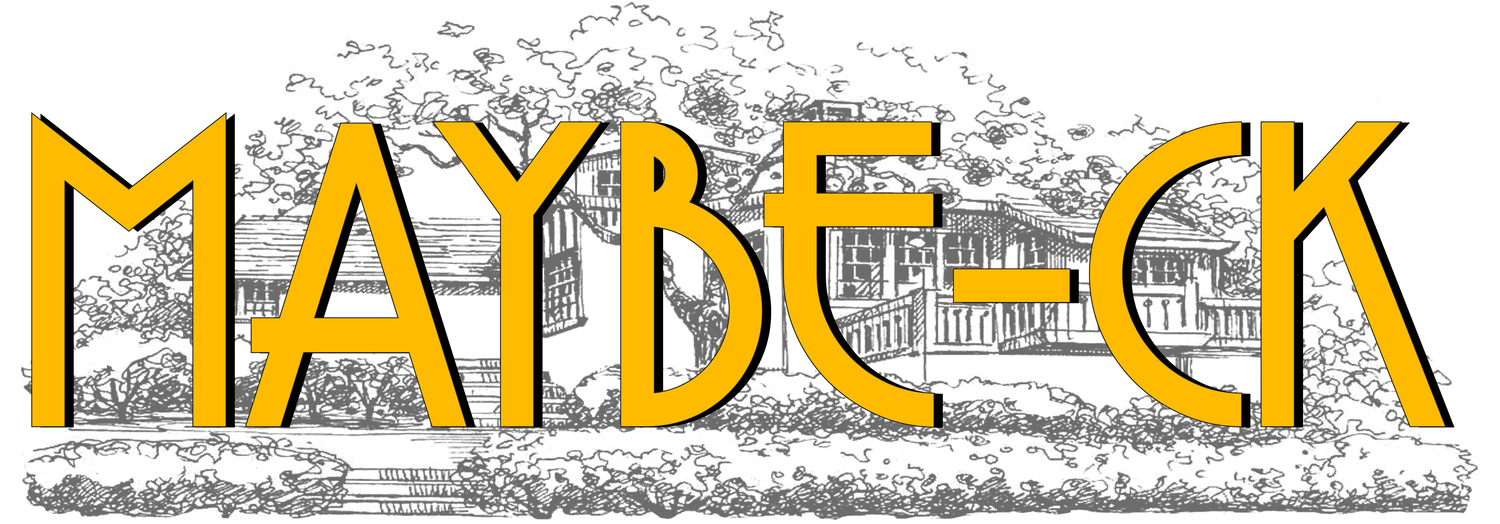Late Period Maybeck Feature: Electric Kitchen
The electric range!:
Wow... an original electric range shutoff switch from our maybe-maybeck house! I have never seen one this old.
I have never seen a shutoff switch for an electric range this old! You can also tell it's old since newer electric ranges require something like 40 amps instead of 60.
Part of the historical info with my house includes info about the V. Rowland and Maybeck connection. They met in '23 after the Berkeley fire as I believe they developed the buffed redwood technique by reusing burnt timbers, like the Japanese Shou-sugi-ban. (I believe the 1924 date is wrong below).
The most relevant information here is that Rowland and Maybeck were design friends and they both developed the electric kitchen and buffed redwood beams together starting in '23.
Electric kitchens were VERY uncommon in the '20s. Much more common is electric appliances like in the electric kitchens of '40s-'60s mid-century homes. It's actually pretty interesting how modern mid-century modern homes are. Mostly people just add some insulation (double pane windows help a lot) and add a gas line to the kitchen (and maybe the laundry) and call it a day! At that point it doesn't feel much different from a contemporary modern home. Now the ideal is typically gas stove, electric convection oven, gas dryer and gas water heater (in my opinion) although the greater use of solar panels and the introduction of the Tesla home battery may lead to more electric appliances over the next 50 years.
Maybeck was known for his pioneering use of fireproof materials after the '23 Berkeley hills fire. He had lost a few great works to fires before that, but after the devastating '23 hills fire, something clicked. I think a part of that change of course was his use of electric kitchens, as electric appliances were seen as safer since they are not "on fire". Part of his change might be his desire to change with the times and use new and (debateably) improved materials and appliances. In fact, some people call him a proto-modernist. Another factor could be that people were beginning to have what resembled modern kitchens in the '20s - a lot of Victorian houses have "lean-to" style enclosed back porch kitchens as the wood stoves of the time produced a lot of smoke. Another thing that was happening around the turn of the century was indoor plumbing that drains to the city sewer system. 100 years ago was a formative time for plumbing and electrical systems.
" In the United States, even though three companies had introduced electric stoves in 1908, penetration was rare; an electric stove was still considered a novelty in the 1920s. By the 1930s, decreased cost of electric power and modernized styling of electric stoves had greatly increased their acceptance." from: https://en.wikipedia.org/wiki/Electric_stove
Well our kitchen was all electric before I put in the gas line to the range and gas dryer. It looks like the house was maybe all electric originally. I don't know when the water heater was put in... that could have been the only original gas appliance though I'm not sure how that worked back then. I found a galvanized tube going up from under the kitchen. Maybe a wood stove for boiling water under the house?
If that's the case that it had a boiler in '27, it may have had no gas line until the furnace in '39-40. If you don't put in a proper central heating setup when the house is built, you may have what I've got: A central furnace for most of the house and a gas line running up to a couple wall furnaces for the additions way up the hill. There's not really room to run ducting where it wasn't before without boxing it inside the room.
Back to the kitchen... Our kitchen had no evidence of a gas line. In fact, the gas line came into the house right to the water heater, went over to the furnace, and a long 1" gas line went over 50' up to the space under the master bath. The gas lines completely skipped the kitchen and laundry but I fixed that. Cooking and drying with gas is still the way to go as natural gas is clean and cheap. The 2031 Del Norte house has been converted to gas. Our house is cooking with gas (using an old '30s Wedgewood). The cubby house has a gas range though I don't know the history of that one since it was originally a "carriage house." Cooking with gas is cool for now, but when will the tides change again?



